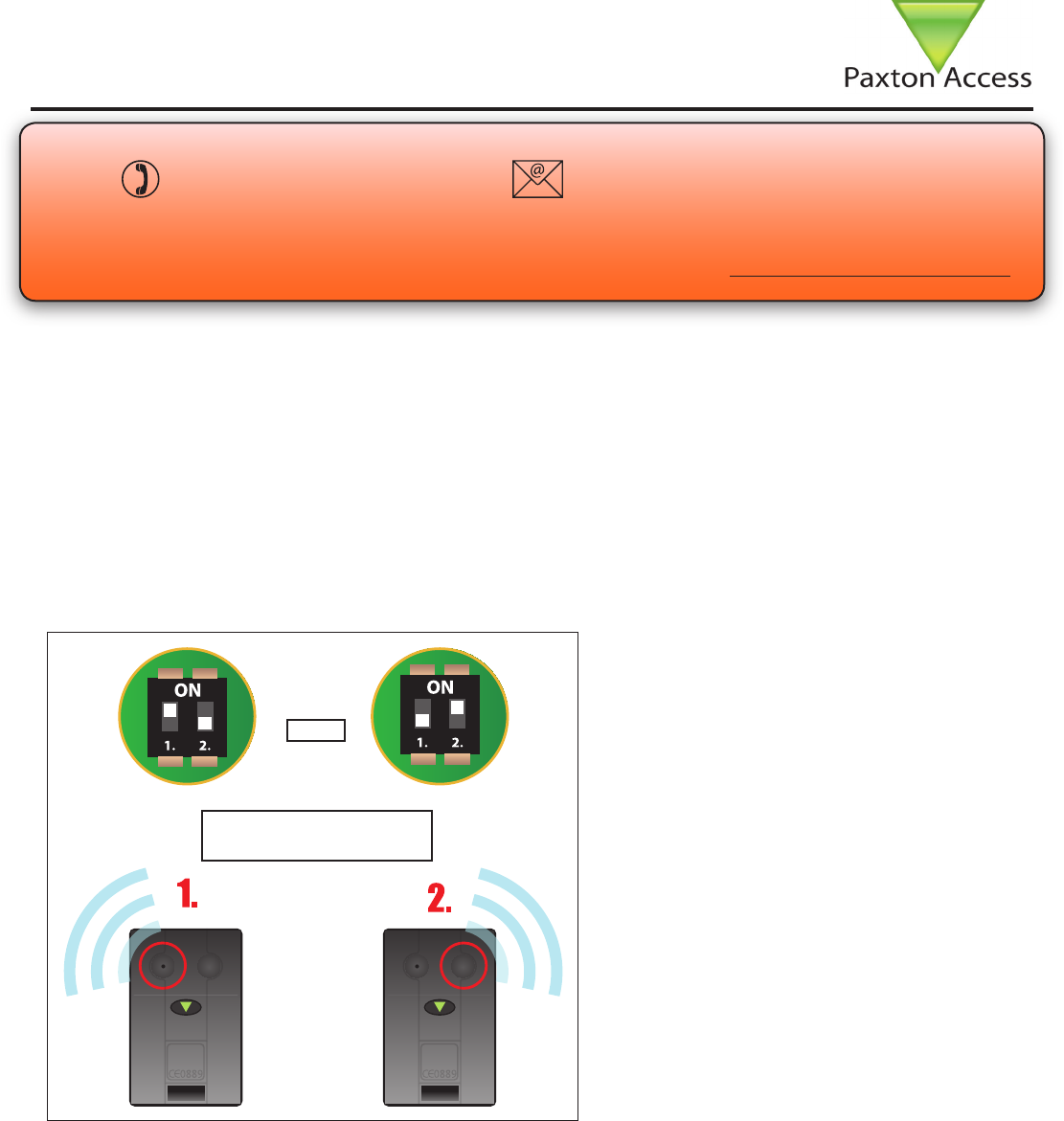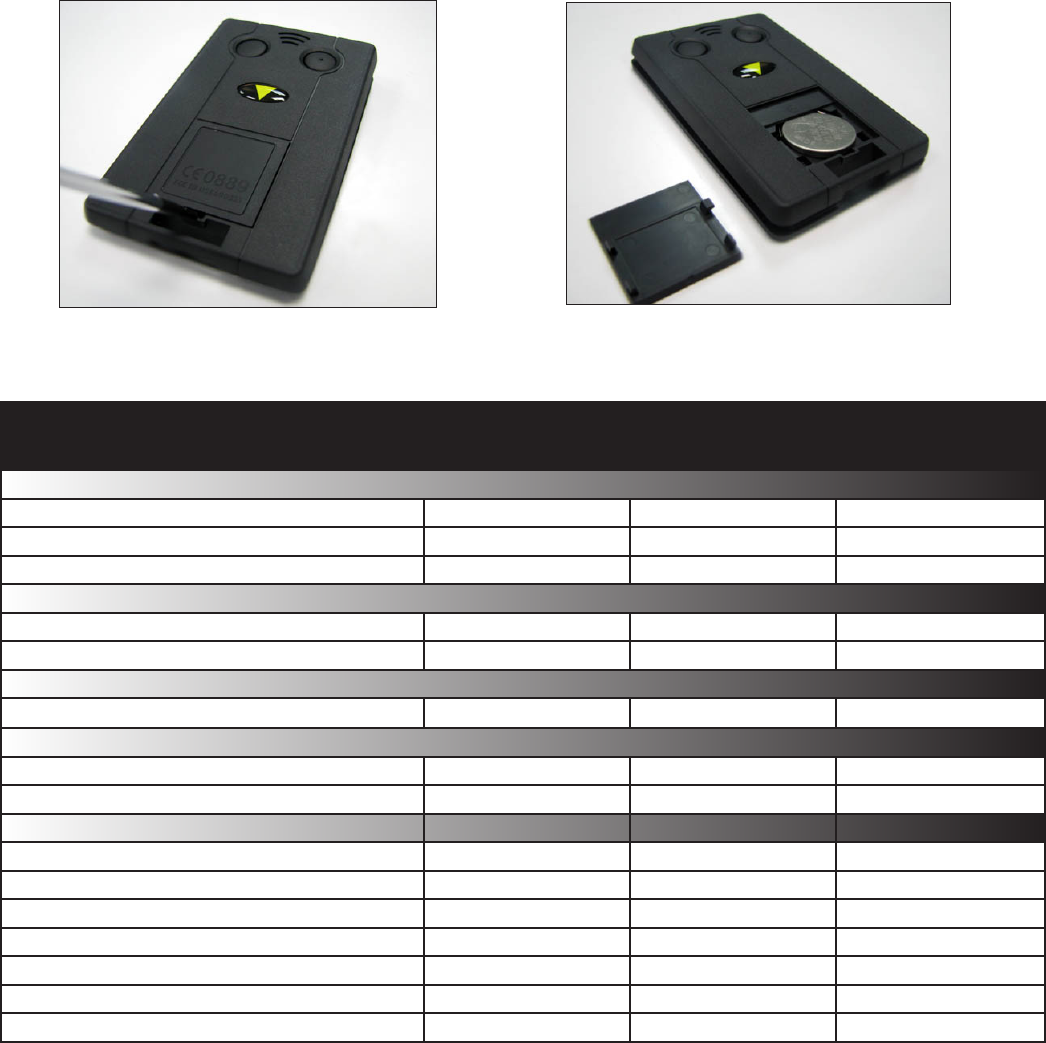Paxton Access 6903M2 Net2 Hands Free Keycard - mk2 User Manual INSTRUCTION Hands free Keycard for Net2
Paxton Access Ltd Net2 Hands Free Keycard - mk2 INSTRUCTION Hands free Keycard for Net2
User Manual

Ins-30106-US Hands free Keycard for Net2
24/04/2009
Technical Support
Technical help is available: Monday - Friday from 12:00 AM - 5:00 PM (PST)
Saturday from 1:00 AM - 5:00 AM (PST)
1.800.672.PAXT support@paxton.co.uk
The keycard has been designed with features to extend battery life, these include a two second timeout once
access has been granted and a capability to prevent repeated access to the same door whilst the keyfob remains
in the eld of the reader. Leaving the keycard in the eld of a reader will reduce battery life.
The hands free interface has a pair of switches labelled SW2. Select either switch 1 or 2 to set which button the
interface will respond to and then power cycle the interface to store this setting.
Interface Settings
To enable the buttons, the keycard must rst be presented to the P series reader and then used in hands free
mode. The keycard stores the details of this interface and can then activate the door using a button.
It can still be used in normal hands free mode and also in local passive mode with other standard readers.
The keycard can store up to 14 doors, seven for each button.
Data Reset
To clear the stored gate information from the keycard hold down both buttons until the beep sounds continually.
The system comprises of a Hands Free Interface, a compatible reader (see specication table) and hands free
keycards or keyfobs. The system operates by using the eld being transmitted by the P series reader to wake up
the token. This then communicates with the interface which contains a long range receiver.
The keycard increases this effective read range to typically 5 yds (maximum 50 yds). This is achieved by
activating the system manually instead of using the reader eld (maximum 8 feet)
Keycards also include a standard EM4100 proximity ID chip and can therefore be presented to any compatible
proximity reader whether they are using the Hands Free interface or not.
What is Hands Free?
Documentation on all Paxton Access products can be found on our web site - http://www.paxton-access.com/
The card will beep as conrmation when it has
communictated with the hands free interface.
This does NOT mean that access has been
granted as that is determined by the access
permissions assigned to the user.
SW2
Hands free interface
Switch settings

3 3/8 in
2 1/8 in
3/8 in
EM4100 - 125 kHz
2.4 GHz
0 °C (32 °F) 50 °C (122 °F)
1 x CR2430
P38 3 ft
P50 4 ft
P75 5 ft
P200 8 ft
6 ft
16 ft
Specications
Carrier frequency
Operating temperature
Electrical
Environment
Dimensions
Min Max
Width
Height
Depth
P200E metal mount
Read range with Hands Free token
System Specication
Typical Battery Life
Battery Type
With button - all readers > 5 yds
5 years
SAFETY WARNING
RISK OF EXPLOSION IF BATTERY IS REPLACED BY AN INCORRECT TYPE.
DISPOSE OF USED BATTERIES ACCORDING TO THE INSTRUCTIONS
Battery replacement
The battery is retained by a spring clip cover. Locate the small slot aperture below its bottom edge. Restrain the
cover with gentle pressure while lifting the lower edge with a small screwdriver. The spring clips on the cover will
release to reveal the battery.
Once the battery has been replaced, place the cover directly above the opening and push down to latch it home.
Long range reader
FCC Compliance
This device complies with Part 15 of the FCC Rules. Operation is subject to the following two conditions:
(1) this device may not cause harmful interference, and (2) this device must accept any interference received, including
interference that may cause undesired operation. Changes or modications not expressly approved by the party responsible for
compliance could void the user’s authority to operate the equipment.
Token type
We hereby declare that the Net2 Hands Free Keycard mk2 FCC ID: USE6903M2 is a portable device which has a maximum
transmit power of 0.24 mW and is not subject to the routine RF exposure evaluation as per Section 2.1093 of the FCC rules.